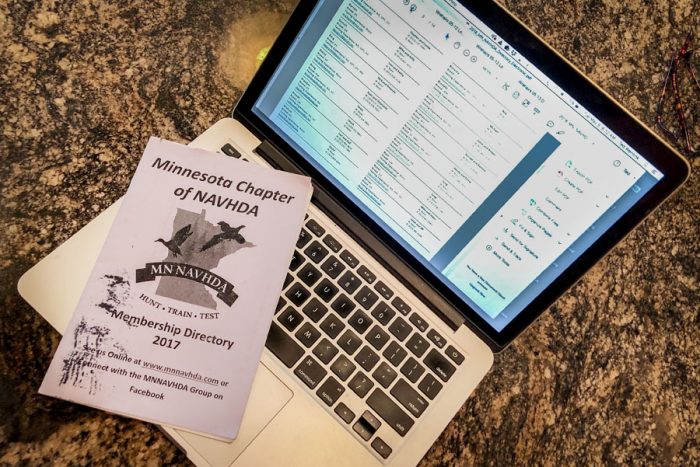If you’ve been in NAVHDA and have had a dog older than a puppy, you’ve probably heard the question, “Have you force fetched your dog?”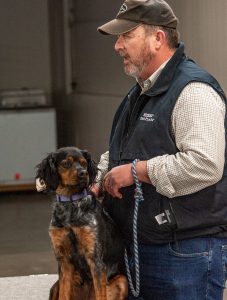
FORCE FETCH. Yikes – sounds scary, eh? Ok – then let’s just call it “Trained Retrieve”. Better? But you say, “My dog is already a natural retriever”, right? Your dog also loves to run to see you, but still you teach him “Come”. Your dog will naturally lie down on a mat, but yet you teach them the  “Down”, or “Place” command. If you don’t teach them the command, then you have no command to enforce when they might not feel so inclined. So, it goes with training retrieve. When the day comes (and trust me it will), when they don’t feel inclined to retrieve something to hand, you’ll have no command that says to them “You Go Do It NOW!” This simple task becomes a foundation for so much of what we do with our dogs in NAVHDA.
“Down”, or “Place” command. If you don’t teach them the command, then you have no command to enforce when they might not feel so inclined. So, it goes with training retrieve. When the day comes (and trust me it will), when they don’t feel inclined to retrieve something to hand, you’ll have no command that says to them “You Go Do It NOW!” This simple task becomes a foundation for so much of what we do with our dogs in NAVHDA.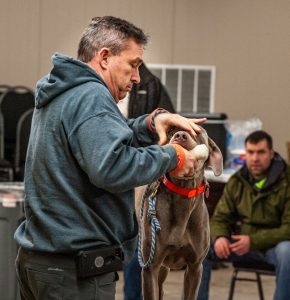
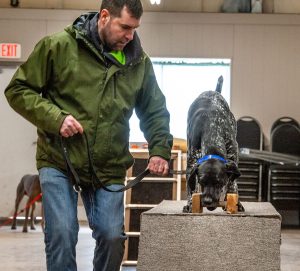
On Saturday February 8th, Minnesota NAVHDA was privileged to have Mark Whalen come here from Poolesville, MD, to put on for us a Force Fetch Clinic. Mark is a Senior NAVHDA Judge, and the Director of Judge Development for NAVHDA International. After seeing Mark’s clinic, it suddenly doesn’t seem so scary anymore.
In attendance were 25 NAVHDA members, 15 of whom had their dogs. Mark walked the participants through the entire process, beginning with teaching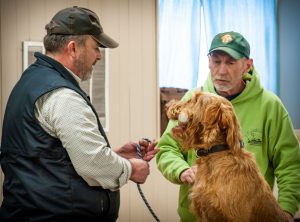 the command “Hold”, working to “Fetch”, and continuing to finish the process to clean, reliable retrieves. While this process varies with each dog, his technique will take most dogs about 12 weeks, making this an ideal activity to do during the winter months, especially since during this process the dog also gets no field work or live birds. In attendance were dogs at different places along the force fetch timeline, who were able to learn and demonstrate the progressions to the next step.
the command “Hold”, working to “Fetch”, and continuing to finish the process to clean, reliable retrieves. While this process varies with each dog, his technique will take most dogs about 12 weeks, making this an ideal activity to do during the winter months, especially since during this process the dog also gets no field work or live birds. In attendance were dogs at different places along the force fetch timeline, who were able to learn and demonstrate the progressions to the next step.
Mark emphasized mechanics – keeping the basics simple, clear and consistent, and being a stickler in the precision of handling. He showed the overlaying of commands and technique, including introducing the e-collar into the process. He explained the use of pressure, and how the dog learns to release the pressure. Note to the guys out there: it was notable that the women in the class had a distinct advantage over the men – their use of lavish praise in a high encouraging voice was far more effective than us guys grudgingly giving a low toned, gruffly delivered “good dog”!
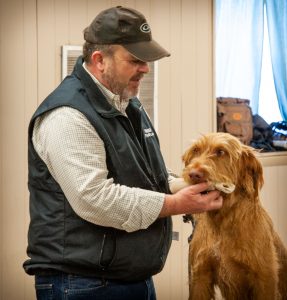 While he prefers to do this after the dog has had its first hunting season, he also pointed out that it’s never too late – this can be done with an older dog. (Old Dog handlers also learned a thing or 2 at the clinic.) Odds are, you’ll be overlaying to them a command for something that they already do, making it enforceable, and ensuring that the dog finishes the retrieve to hand. (Given the way that I shoot, that’s a must to keep the cripples from running off if the dog drops it!).
While he prefers to do this after the dog has had its first hunting season, he also pointed out that it’s never too late – this can be done with an older dog. (Old Dog handlers also learned a thing or 2 at the clinic.) Odds are, you’ll be overlaying to them a command for something that they already do, making it enforceable, and ensuring that the dog finishes the retrieve to hand. (Given the way that I shoot, that’s a must to keep the cripples from running off if the dog drops it!).
Many thanks to Mark Whalen for coming here to work with us. Given the length of our winter here, we might as well do something productive now with our dogs, right?

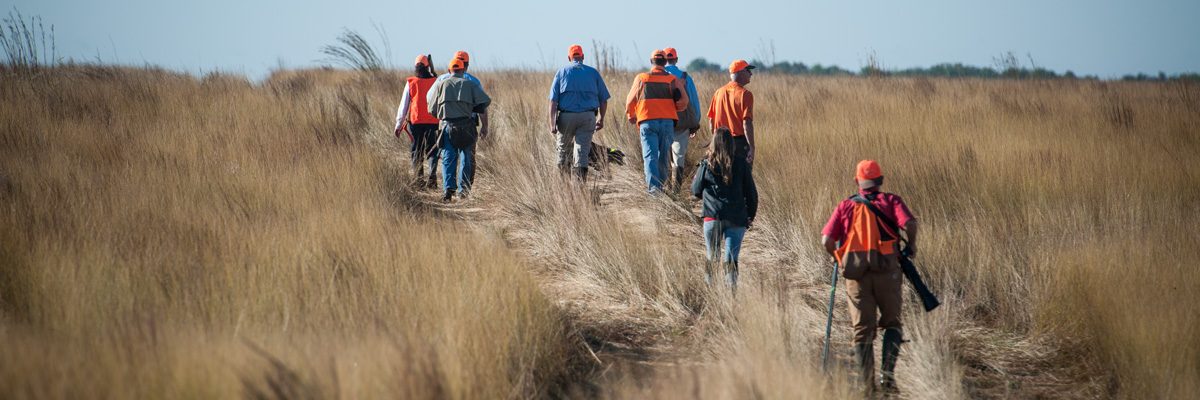
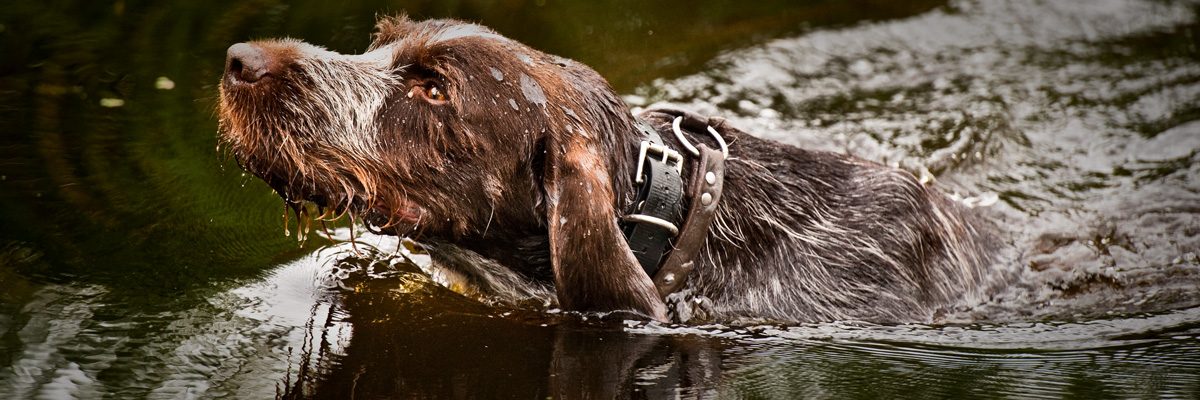


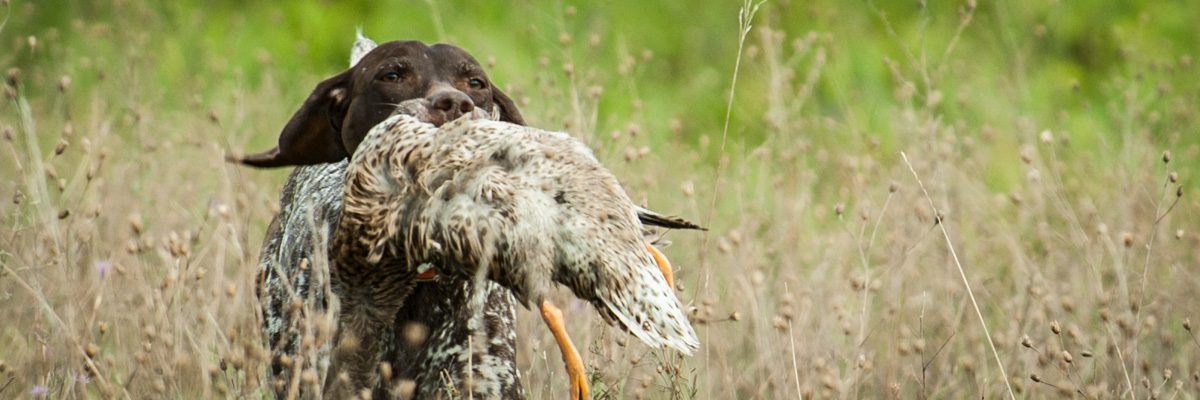

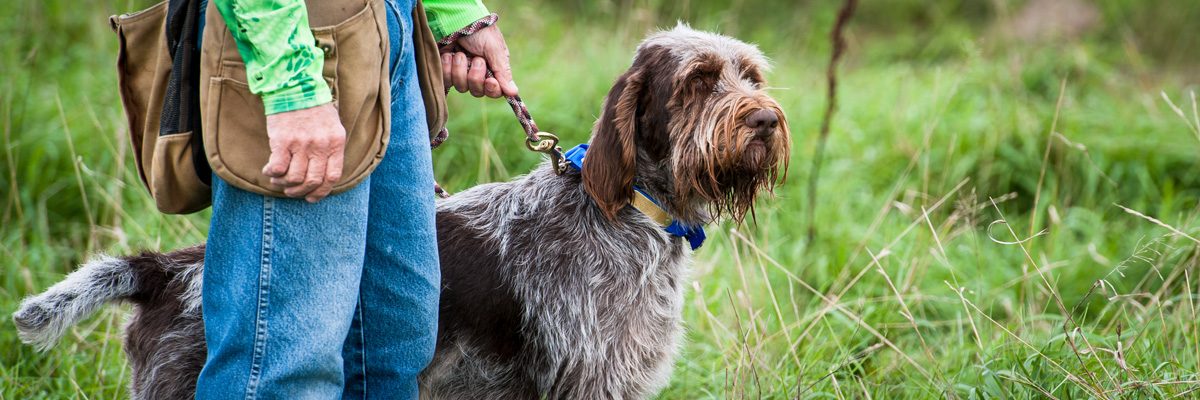


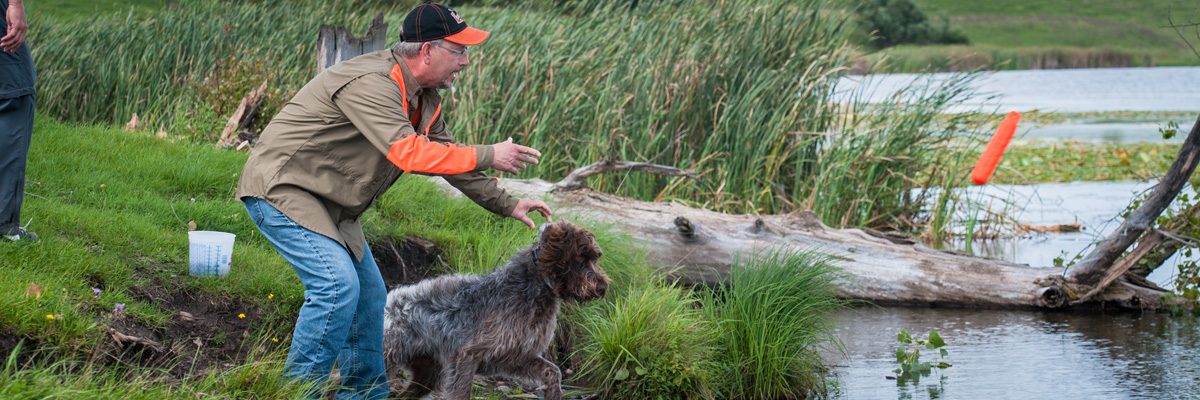

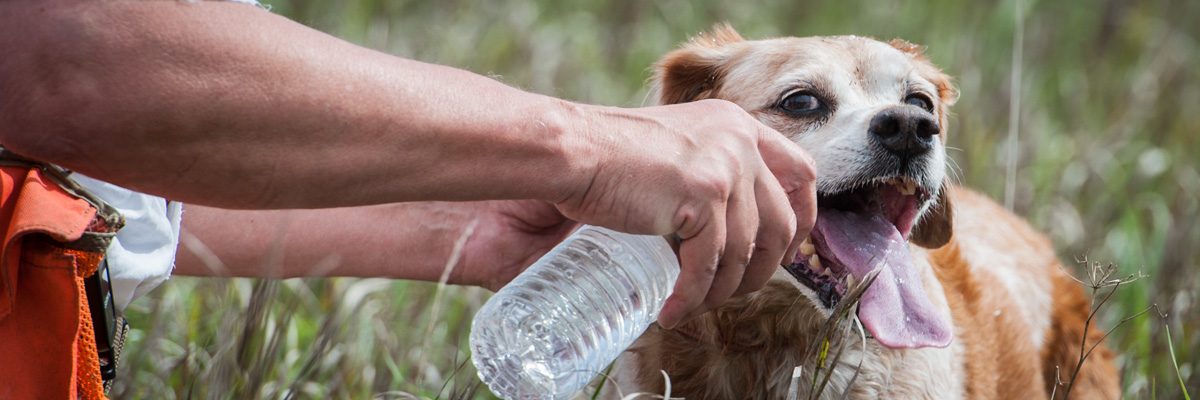
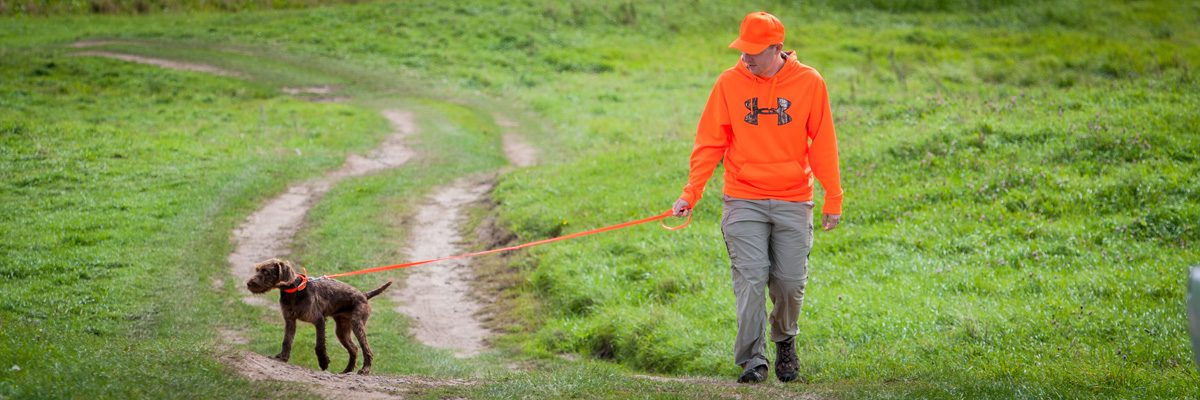




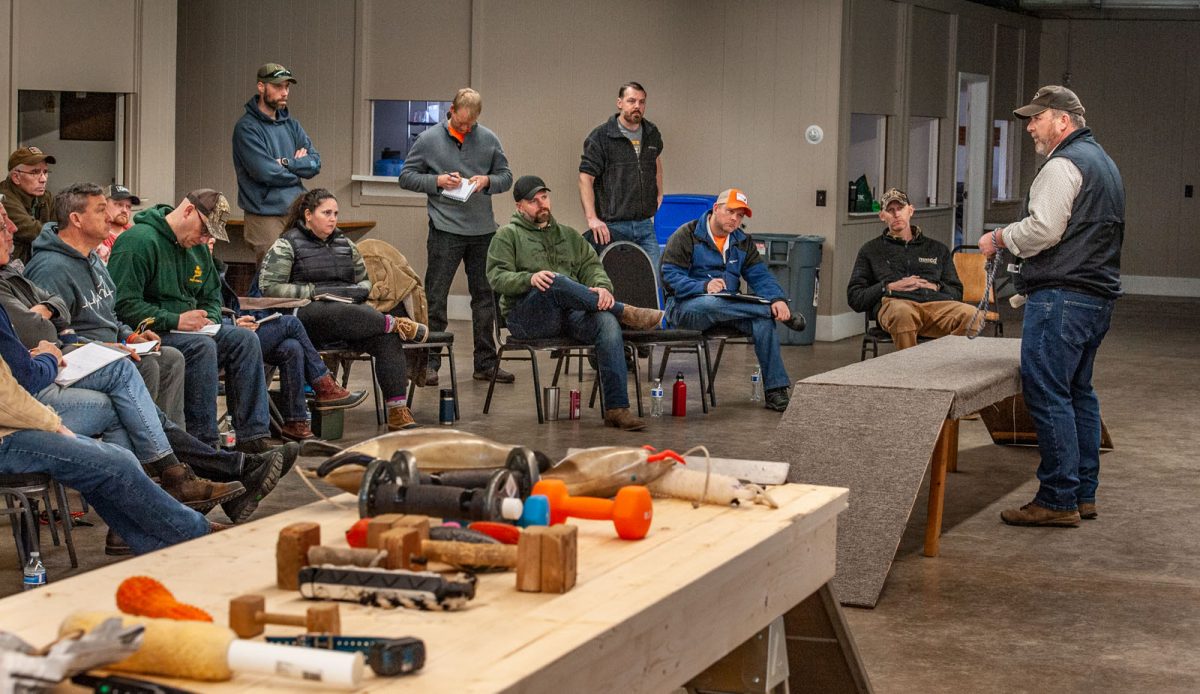
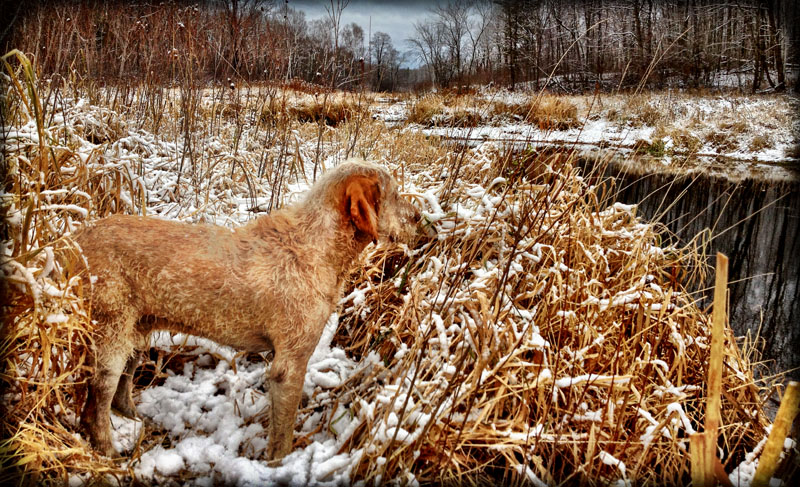
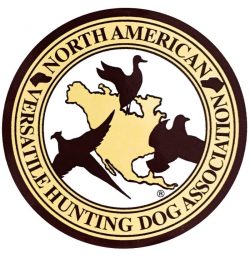 For your reading pleasure…we received the following notice from NAVHDA International with a request to share with our members. Read, and then it’s time to go hunting!
For your reading pleasure…we received the following notice from NAVHDA International with a request to share with our members. Read, and then it’s time to go hunting!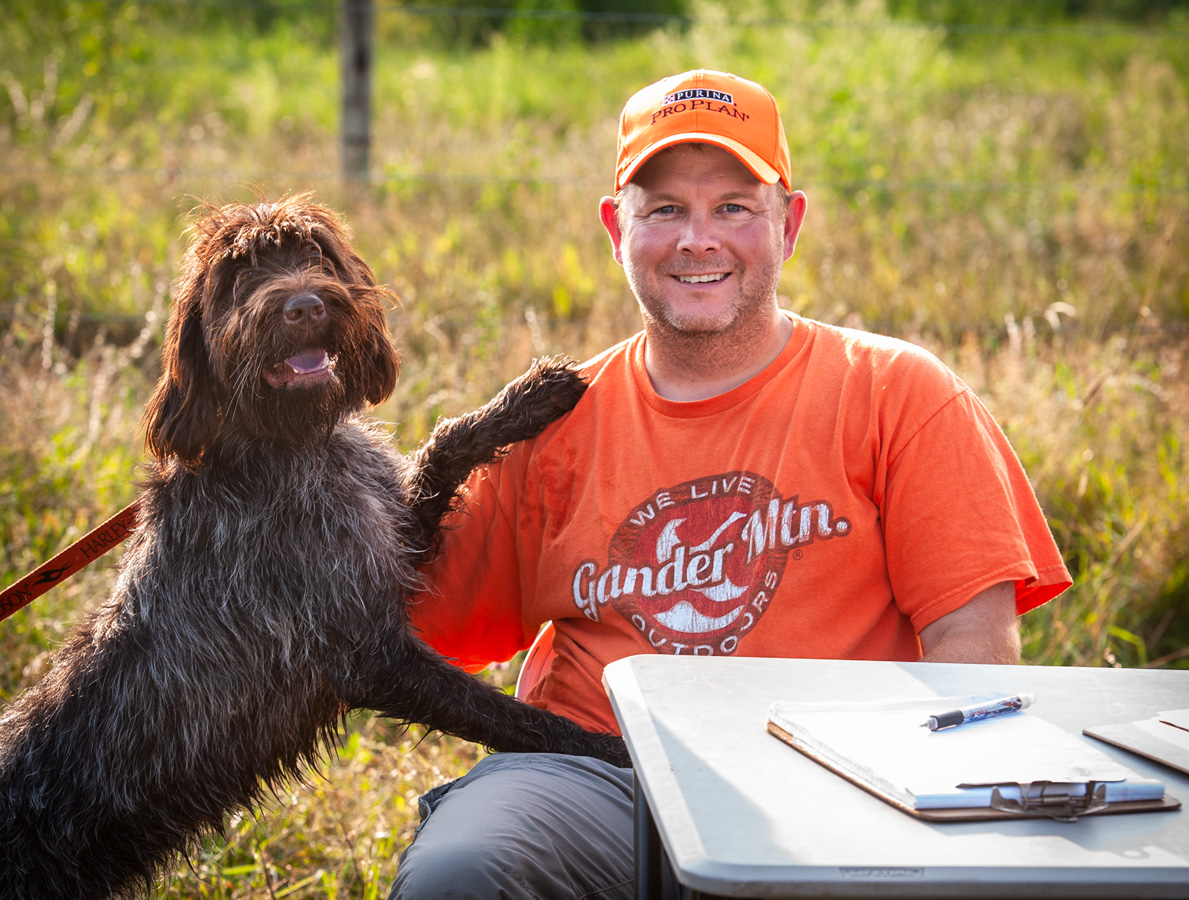
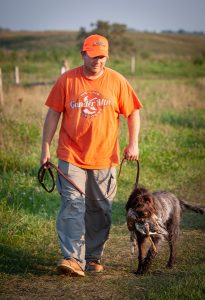

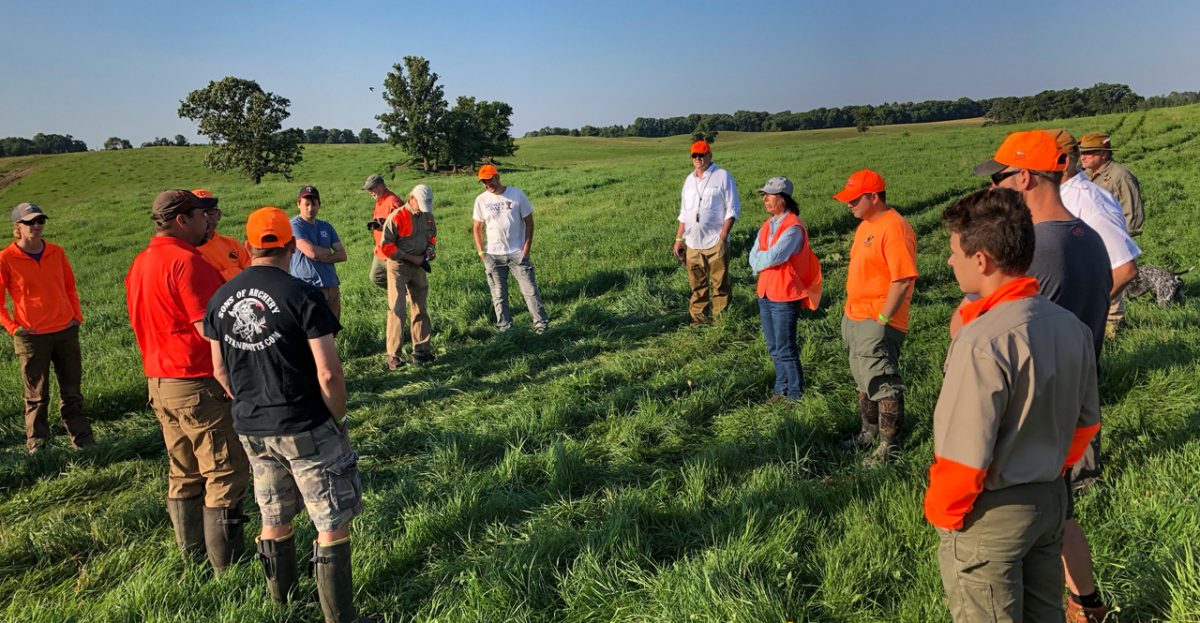
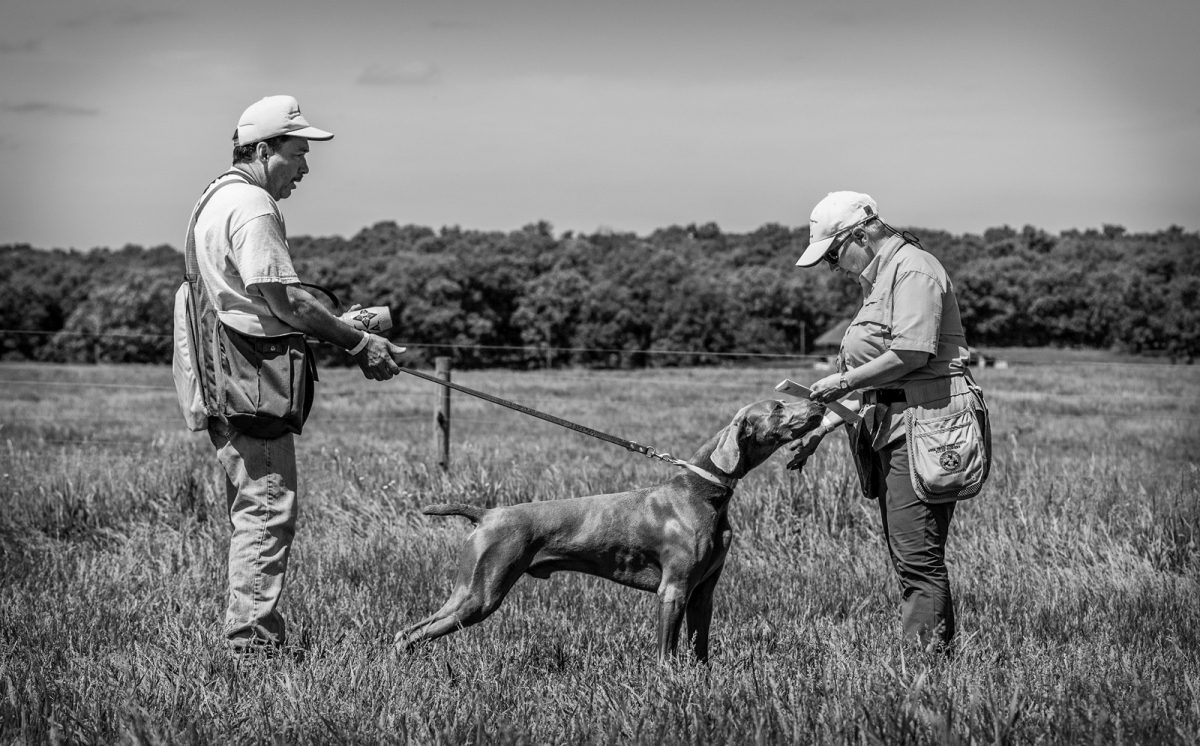
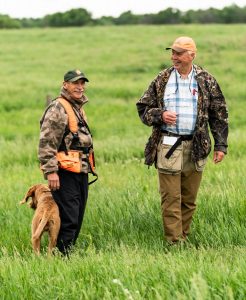 day on Friday. Thanks to the many members that stepped forward to volunteer, many of whom took off work on Friday, we were well staffed to handle all three days.
day on Friday. Thanks to the many members that stepped forward to volunteer, many of whom took off work on Friday, we were well staffed to handle all three days.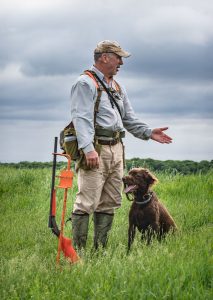
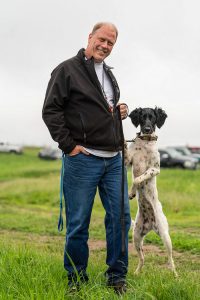 Saturday was overcast and cloudy most of the morning for the field work, with the last few dogs running in a downpour. The afternoon saw showers, a couple times quite heavy, for the water work and tracks. The NA dogs and handlers did well in the changing weather through the day.
Saturday was overcast and cloudy most of the morning for the field work, with the last few dogs running in a downpour. The afternoon saw showers, a couple times quite heavy, for the water work and tracks. The NA dogs and handlers did well in the changing weather through the day.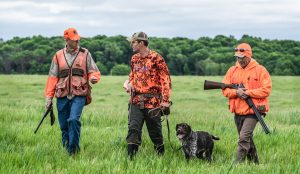 NA dog running, and it was exciting to watch her expand her search to right and left, then use the wind to work her way back to the birds in the field. All dogs scored well in the tests.
NA dog running, and it was exciting to watch her expand her search to right and left, then use the wind to work her way back to the birds in the field. All dogs scored well in the tests.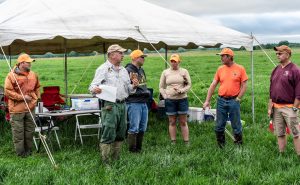
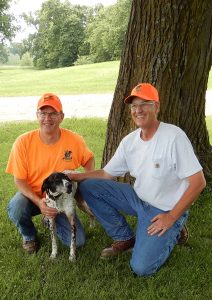
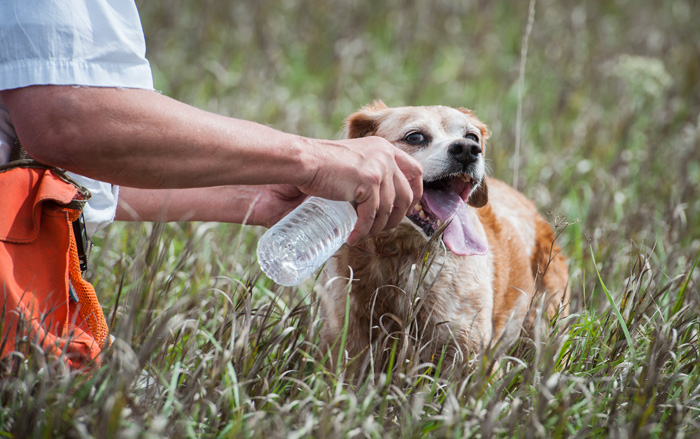
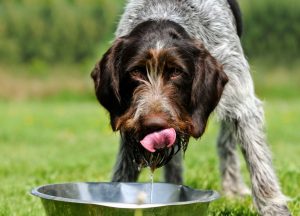
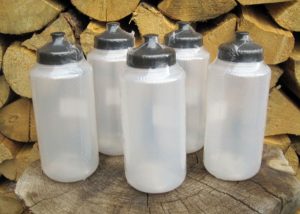 As for, “he can’t drink from a bottle” or “he won’t stop to drink” … Training your dog to drink from a water bottle will be the easiest thing you teach all summer, and can save his life. And even if he doesn’t want it, sometimes you might have to just hook him by the collar, squirt some water into the corner of his mouth, behind his ears, in his armpits and groin (areas for cooling where there are major arteries close to the surface). This also gives you a chance to settle him a bit, refocus and reconnect to go and hunt some more.
As for, “he can’t drink from a bottle” or “he won’t stop to drink” … Training your dog to drink from a water bottle will be the easiest thing you teach all summer, and can save his life. And even if he doesn’t want it, sometimes you might have to just hook him by the collar, squirt some water into the corner of his mouth, behind his ears, in his armpits and groin (areas for cooling where there are major arteries close to the surface). This also gives you a chance to settle him a bit, refocus and reconnect to go and hunt some more.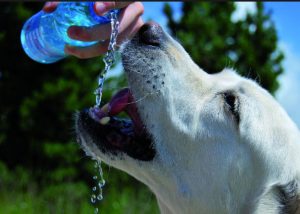 Unlike humans, dogs don’t sweat, except through the pads of their feet. They cool by panting, and an excessively panting dog will have difficulty collecting scent. When the panting isn’t cooling enough, the body temperature rises. Your dog’s normal temperature is 101-102˚. His working temperature could be 104˚. As his temperature approaches 107-108˚, organ damage can occur as he’s cooking his own insides. Owning a good thermometer and knowing your dog’s baseline (working) temperature can keep him out of trouble.
Unlike humans, dogs don’t sweat, except through the pads of their feet. They cool by panting, and an excessively panting dog will have difficulty collecting scent. When the panting isn’t cooling enough, the body temperature rises. Your dog’s normal temperature is 101-102˚. His working temperature could be 104˚. As his temperature approaches 107-108˚, organ damage can occur as he’s cooking his own insides. Owning a good thermometer and knowing your dog’s baseline (working) temperature can keep him out of trouble.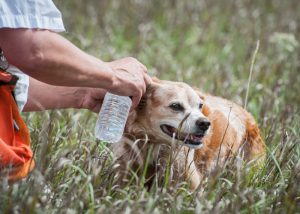 them into a vehicle with the A/C on high, blowing on them. Stop when their temperature reaches 103. Their internal thermostat is messed up, and you don’t want their temperature to drop too far, causing hypothermia.
them into a vehicle with the A/C on high, blowing on them. Stop when their temperature reaches 103. Their internal thermostat is messed up, and you don’t want their temperature to drop too far, causing hypothermia.